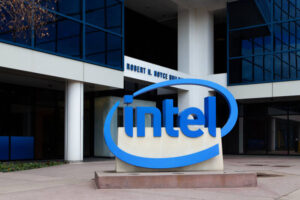# The Future of Intel: Government Influence, Stock Dynamics, and Market Implications
At Extreme Investor Network, we strive to provide insights that extend beyond the surface of market news, uncovering the underlying trends that could affect your investment decisions. Today, we dive into the current landscape surrounding Intel, exploring the role of government involvement, the potential for stock price shifts, and what the future might hold for this semiconductor giant.
## Government Involvement and National Security: A Strategic Imperative
While Intel and TSMC are not officially collaborating at this point, the U.S. government remains focused on ensuring the stability of Intel’s operations, especially given the company’s pivotal role in domestic semiconductor production. Recent reports indicate that the Trump administration is advocating for Intel’s manufacturing assets to stay under American control, reflecting a growing concern about national security and technology supply chains.
Intel has received significant support from the U.S. government, including nearly $7.86 billion under the CHIPS Act, aimed at bolstering domestic production capabilities. This massive financial backing underscores the strategic importance of Intel in maintaining the United States’ technological edge. As a result, any potential foreign takeover—particularly by entities based in countries like China—would face considerable scrutiny and could be politically charged.
## Intel’s Stock Rally: Sustainable Gains or Market Speculation?
Recently, rumors of a government-backed restructuring have sparked a notable rally in Intel’s stock price, triggering a squeeze on short sellers. While this spike is certainly garnering attention, the question looms: is this rally sustainable? Analysts, including Bernstein’s Stacy Rasgon, urge caution. They point out that the recent surge is driven more by geopolitical headlines rather than any substantive improvements in Intel’s core business operations.
In recent years, under the leadership of former CEO Pat Gelsinger, Intel’s manufacturing strategy faced various challenges, resulting in reduced cash flow, layoffs, and significant contract losses. Without clear signs of operational turnaround and profitable growth, one can argue that the current stock movement might be more speculative than based on solid business fundamentals.
## What Lies Ahead for Intel?
The potential breakup of Intel could signal a transformative era in the semiconductor industry. Should TSMC acquire Intel’s foundry business, it stands to gain significantly—expanding its operations in the U.S. while simultaneously mitigating risks associated with geopolitical tensions, especially those connected to China.
Moreover, Broadcom’s interest in Intel’s design unit indicates a strategic maneuver to enhance its position in chip design and development. The ripple effects of such a move could reshape the industry landscape, impacting competitors and investors alike.
### The Bottom Line: Stay Informed and Engaged
As we navigate these complex developments, it’s crucial for investors to remain informed and engaged. Keeping an eye on policy shifts, corporate strategies, and market dynamics can provide critical insights into the future of companies like Intel. At Extreme Investor Network, we aim to empower our readers with the necessary information and analysis to make informed decisions in an ever-evolving market. Stay tuned for more updates as we continue to monitor the situation and provide actionable insights to guide your investment strategies.

